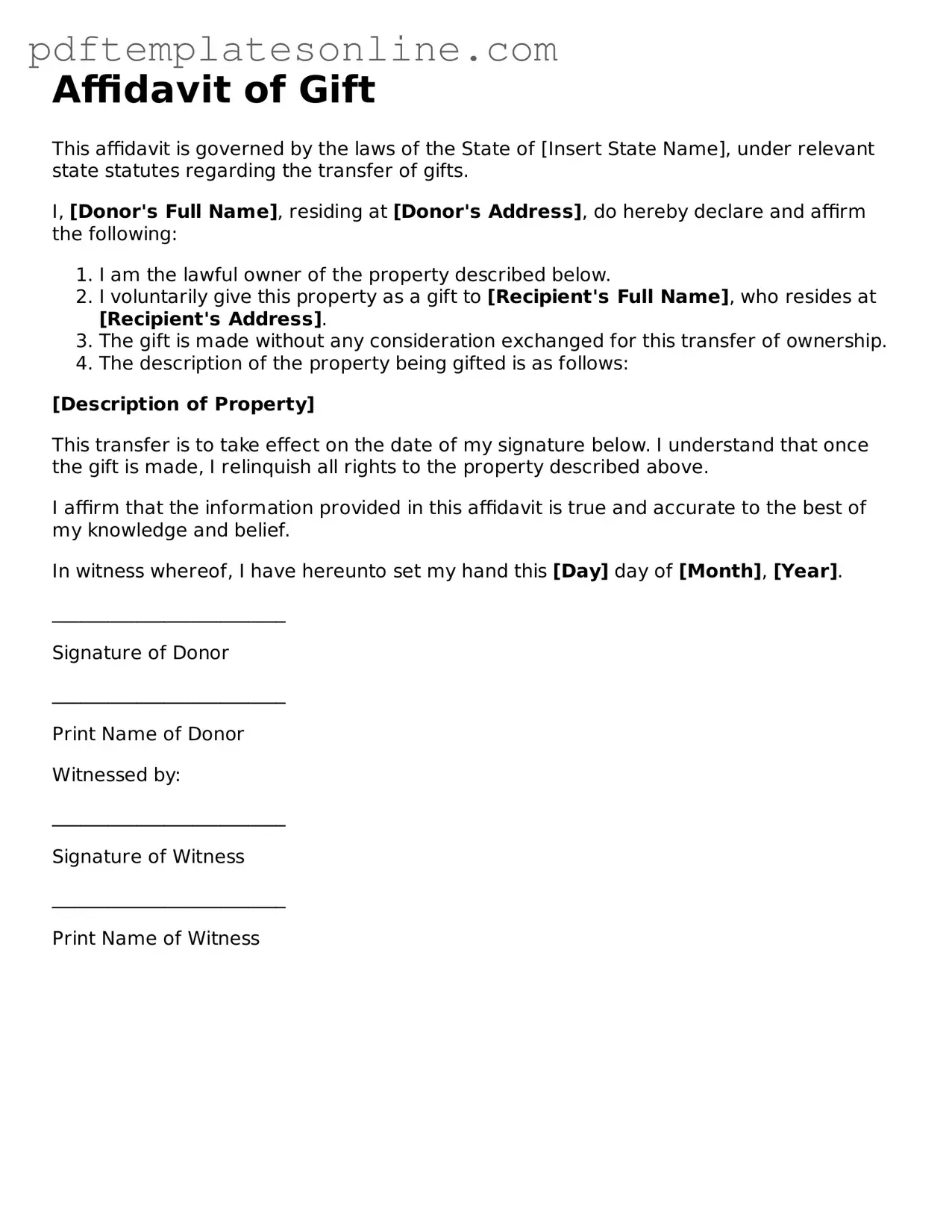Filling out the Affidavit of Gift form can be straightforward, but several common mistakes often occur. One frequent error is providing incomplete information. Each section of the form requires specific details, such as the names of the donor and recipient, the relationship between them, and a description of the gift. Omitting any of this information can lead to delays or complications in processing the gift.
Another mistake is failing to sign and date the form. Both the donor and recipient must sign the affidavit to validate the gift. Without these signatures, the form may be considered invalid, which can create issues later on. It is essential to double-check that all required signatures are present before submitting the form.
People also often overlook the importance of accurate descriptions of the gift. Describing the gift too vaguely can lead to misunderstandings. It is crucial to provide a clear and detailed description, including the value of the gift if applicable. This clarity helps ensure that all parties understand the nature of the gift and can prevent disputes in the future.
Additionally, individuals sometimes forget to include any necessary supporting documentation. Depending on the nature of the gift, additional paperwork may be required, such as proof of ownership or valuation. Not including these documents can result in the form being rejected or delayed.
Lastly, many people fail to review the completed form before submission. Errors in spelling, numbers, or other details can occur easily. Taking the time to carefully review the entire form can help catch mistakes that might otherwise go unnoticed, ensuring a smoother process for all involved.
